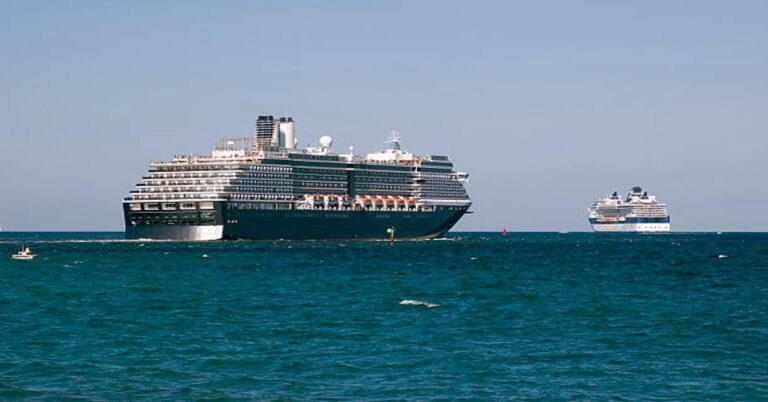
The Canary Islands are famous not only for their dramatic volcanic landscapes and year-round mild climate but also for a unique natural phenomenon that has shaped their agriculture, ecosystems, and even local culture — Jable. The word Jable refers to a particular type of volcanic sand or light, porous soil found especially in the island of Lanzarote. This natural substance, formed from ancient volcanic eruptions and shaped by centuries of wind and weather, holds immense ecological and agricultural significance. It has allowed the inhabitants of these arid islands to cultivate crops in what would otherwise be barren land. Understanding the origins, properties, and importance of Jable provides insight into the ingenuity of the Canarian people and the delicate balance of nature that supports life on volcanic soil.
1. The Origin and Formation of Jable
Jable is not an ordinary sand. Its origin lies in the geological processes that formed the Canary Islands themselves — a series of volcanic eruptions millions of years ago that built these islands from the ocean floor. As volcanic rock and ash cooled and weathered over centuries, the lighter particles were carried by wind and water to the lowlands. In Lanzarote, this process was especially pronounced due to the island’s dry climate and strong trade winds, which transported fine grains of light-colored pumice and volcanic ash across the landscape.
The word Jable is believed to have roots in the Spanish term for sandy or loose soil. However, the material itself is unique: it is composed mainly of volcanic glass, pumice, and fine mineral particles. Unlike typical desert sand, which is mostly silica, Jable contains a mix of minerals such as basaltic glass, feldspars, and trace elements like iron and magnesium that enrich the soil beneath.
Over thousands of years, Jable accumulated in large sheets or dunes, particularly in the central and southwestern regions of Lanzarote. These dunes slowly migrated with the wind, covering older soils and creating a distinct agricultural layer that retains moisture remarkably well despite the island’s aridity. This natural process gave rise to one of the most ingenious agricultural systems in Europe.
2. Geographic Distribution of Jable in the Canary Islands
While traces of Jable can be found on several of the Canary Islands, it is Lanzarote that stands out as the true land of Jable. The most famous deposits occur in the region known as El Jable, stretching between the villages of Soo and San Bartolomé. This area, covering thousands of hectares, forms a natural corridor of sand dunes between the northern and southern parts of the island.
Other islands such as Fuerteventura and Gran Canaria also contain smaller areas of sandy, volcanic soils that share some properties with Jable, but none exhibit the same scale or purity. The reason lies in the unique combination of Lanzarote’s topography, wind patterns, and volcanic history. Its relatively flat terrain and proximity to the Atlantic trade winds make it an ideal environment for the transport and deposition of fine volcanic particles.
| Island | Presence of Jable | Main Locations | Agricultural Importance |
|---|---|---|---|
| Lanzarote | Very High | El Jable, Soo, San Bartolomé | Essential for crop cultivation |
| Fuerteventura | Moderate | Corralejo, La Oliva | Limited local farming |
| Gran Canaria | Low | Maspalomas region | Minor agricultural role |
| Tenerife | Minimal | Isolated patches | Geological curiosity only |
3. Physical and Chemical Properties of Jable
Jable possesses unique physical and chemical characteristics that make it both fascinating to scientists and invaluable to farmers. Physically, Jable is composed of fine, porous grains that are light enough to be carried by the wind yet dense enough to settle and form stable layers. Its color ranges from pale beige to golden, creating the distinctive appearance of Lanzarote’s dunes.
Chemically, it is a mineral-rich material derived from volcanic glass. It contains silica, alumina, iron oxides, and trace elements that enrich the underlying soil. However, its most remarkable property is its moisture retention capacity. Although Jable itself is not fertile in the conventional sense, it acts as a protective layer that traps dew and prevents evaporation from the soil below. This ability to capture and preserve humidity has been crucial for the survival of crops in an environment where rainfall is scarce and irregular.
| Property | Description |
|---|---|
| Grain Size | Fine to medium (0.1–1 mm) |
| Color | Pale beige to golden yellow |
| Composition | Volcanic glass, pumice, feldspar, basalt fragments |
| Moisture Retention | High – due to porosity |
| Fertility | Low direct nutrients, but enhances subsoil moisture |
| Thermal Regulation | Reflects sunlight, stabilizing soil temperature |
This combination of traits gives Jable a dual function: it protects the soil from drying out while simultaneously regulating temperature — keeping roots cooler during hot days and warmer during cold nights. In effect, it creates a microclimate favorable for plant growth.
4. The Role of Jable in Traditional Agriculture
The farmers of Lanzarote, known as jableros, have for centuries harnessed the properties of Jable to sustain their livelihoods. When European visitors first observed the island’s agriculture, they were astonished to see fertile fields surrounded by desert-like landscapes. The secret lay beneath the surface — in the strategic use of Jable.
Traditional farmers developed a system known as “cultivo en jable” or Jable cultivation. They learned that by covering fields with a thick layer of Jable (often 10–20 cm deep), they could drastically reduce water loss and provide crops with a constant source of moisture. Even without irrigation, morning dew and the island’s occasional fog would condense on the cool sand and seep into the soil, nourishing the roots below.
This practice allowed the cultivation of crops such as potatoes, melons, pumpkins, and cereals in one of the driest regions of Europe. In particular, sweet potatoes and melons from Lanzarote became famous for their flavor and quality, grown entirely under natural moisture regulation without artificial watering.
5. Modern Agricultural Applications of Jable
In recent decades, modern technology has reached the Canary Islands, bringing irrigation systems and new farming methods. Yet, many farmers continue to value Jable for its sustainable and low-impact properties. In a world facing climate change, desertification, and water scarcity, Jable cultivation stands as a model of ecological adaptation.
Today, agricultural experts study Jable as a natural soil conditioner. By mixing volcanic sand into poor soils, they can improve aeration, reduce evaporation, and promote root health. The use of Jable in organic farming is growing, as it requires no chemical fertilizers and aligns with sustainable practices. Additionally, it has potential use in green roofs, hydroponic systems, and soil rehabilitation for arid regions worldwide.
| Modern Use | Description | Benefit |
|---|---|---|
| Organic Farming | Natural soil cover | Reduces need for irrigation |
| Soil Rehabilitation | Blended with poor soils | Improves structure & aeration |
| Climate Adaptation | Used in dry zones | Prevents desertification |
| Landscape Gardening | Decorative sand | Aesthetic and functional |
| Research | Soil science studies | Model for sustainable practices |
6. Ecological Importance of Jable Ecosystems
Beyond its agricultural role, Jable is a vital component of Lanzarote’s natural ecosystem. The El Jable region supports a range of plant and animal species uniquely adapted to its sandy environment. These include endemic plants such as Traganum moquinii (a hardy shrub known as balancón) and Launaea arborescens. The dunes also provide nesting habitats for several bird species, including the Houbara bustard, a protected species that relies on open sandy terrain for breeding.
Because of its fragility, the Jable ecosystem faces threats from human activity, such as off-road driving, construction, and unregulated tourism. Conservation programs now aim to protect the dunes and prevent erosion. Many areas have been designated as part of Lanzarote’s Biosphere Reserve, recognized by UNESCO for its unique combination of natural and human heritage.
7. Jable in Culture and Heritage
For the people of Lanzarote, Jable is more than just sand — it is a symbol of resilience and harmony with nature. Generations of Canarians have built their lives around the rhythms of the land, learning to work with the wind and the sand rather than against them. The sight of white sand fields bordered by black volcanic walls is iconic, representing centuries of adaptation.
Traditional festivals often honor the agricultural heritage of Jable, and local artisans even use its imagery in ceramics, paintings, and folklore. The term jable has also entered the island’s dialect, used metaphorically to describe something light, shifting, or resilient. This deep cultural connection underscores how natural materials can shape not only the environment but also the identity of a community.
8. Challenges and Threats to Jable Landscapes
Like many natural systems, the Jable areas are now under pressure from modern development. Urban expansion, tourism infrastructure, and unregulated recreational activities can damage the delicate dune balance. Erosion and sand loss threaten both biodiversity and traditional agriculture. Furthermore, climate change poses new risks: altered wind patterns and prolonged droughts may disrupt the natural processes that sustain Jable formation.
Efforts are underway to address these challenges. Local authorities and environmental groups promote responsible tourism, restrict vehicle access to dunes, and support sustainable farming programs. Public awareness campaigns highlight the importance of Jable not only as a resource but as a living landscape deserving of protection.
9. The Science Behind Jable Moisture Retention
To understand why Jable is so effective at conserving moisture, it helps to look at its microstructure. Under a microscope, Jable grains appear porous and irregular, full of tiny cavities that trap air and water vapor. When the cool night air condenses over the dunes, dew collects on the grains and trickles down to the subsoil. During the day, the light color of the sand reflects sunlight, minimizing heat absorption and reducing evaporation. This cyclical process creates a self-regulating moisture system — a natural adaptation perfectly suited to Lanzarote’s climate.
In comparison, bare volcanic rock or clay soils would lose moisture rapidly under the island’s strong winds. Jable thus acts as an insulating blanket, capturing water at night and shielding it from evaporation during the day. Scientists studying desert environments have taken interest in this process as a potential model for water conservation in arid agriculture worldwide.
10. Sustainable Future and Global Relevance
As the world faces increasing environmental challenges, the lessons of Jable are more relevant than ever. The people of Lanzarote have demonstrated that it is possible to farm sustainably in extreme environments by respecting natural materials and processes. Rather than fighting the desert, they have learned to collaborate with it. This philosophy aligns perfectly with modern principles of sustainability, resilience, and ecological design.
Researchers from across Europe have visited Lanzarote to study how Jable-based farming might inspire climate-smart agriculture elsewhere. In regions facing desertification — from North Africa to the Middle East — similar methods could help communities adapt to water scarcity. The Jable system reminds us that ancient knowledge, when understood and respected, can offer solutions to some of today’s most urgent problems.
Conclusion
Jable is one of nature’s quiet miracles — a substance born from volcanic fire and sculpted by the wind, transformed by human ingenuity into a foundation of life. It embodies the spirit of the Canary Islands: resilience, adaptation, and harmony between people and environment. From its geological origins to its role in agriculture and culture, Jable represents a bridge between earth and humanity. As climate change reshapes our planet, the story of Jable stands as a powerful reminder that sustainability begins with understanding and respecting the natural materials that sustain us.
Frequently Asked Questions (FAQs)
1. What exactly is Jable?
Jable is a light, porous volcanic sand found mainly on Lanzarote in the Canary Islands. It is composed of pumice, volcanic glass, and mineral particles formed by ancient eruptions and transported by wind. Jable plays a crucial role in moisture retention and traditional agriculture.
2. Why is Jable important for farming in Lanzarote?
Because Lanzarote receives very little rainfall, Jable is essential for trapping dew and preventing soil evaporation. Farmers use it as a natural cover that maintains soil humidity, allowing crops to grow without irrigation in one of Europe’s driest climates.
3. What types of crops grow best in Jable soil?
Crops like sweet potatoes, melons, pumpkins, and cereals thrive under Jable cultivation. These plants benefit from the consistent moisture and temperature regulation provided by the sand layer.
4. Is Jable found on other Canary Islands?
Yes, but in smaller quantities. Lanzarote has the largest and most significant Jable deposits, especially in the El Jable region. Fuerteventura and Gran Canaria have smaller areas with similar sandy soils, though they play a minor agricultural role.
5. How can Jable inspire sustainable practices elsewhere?
Jable demonstrates how natural materials can support farming in dry climates without heavy irrigation or chemicals. Its principles — moisture retention, temperature moderation, and soil protection — could be adapted to help other arid regions combat desertification and improve food security.






